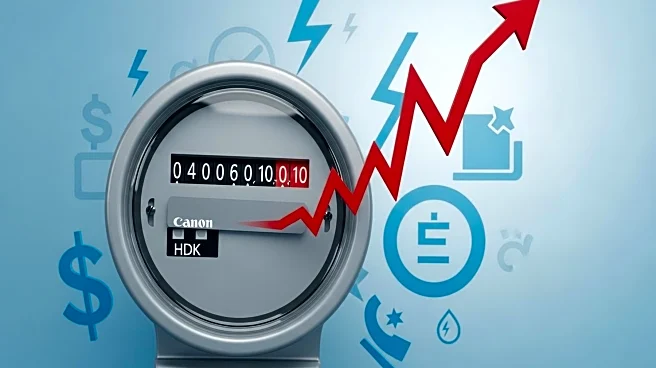What's Happening?
Residential electricity rates in the United States have increased by 6.6% compared to last year, according to data from the U.S. Energy Information Administration. The largest rate hikes were observed in Maine, the District of Columbia, and New Jersey. The overall average increase across all sectors was 5.2%, with residential customers experiencing the highest rise. This surge in electricity rates is largely attributed to rising natural gas prices, which have soared by 22.6% at the Henry Hub. The demand for electricity has also been impacted by the growth of artificial intelligence data centers, which have stressed utility budgets and necessitated infrastructure upgrades. Additionally, extreme weather conditions have contributed to increased utility costs.
Why It's Important?
The increase in electricity rates has significant implications for U.S. consumers and businesses. Higher utility bills can strain household budgets, particularly for those in regions with the steepest rate hikes. Businesses may face increased operational costs, potentially affecting their profitability and competitiveness. The rise in natural gas prices, a key driver of electricity costs, highlights the ongoing challenges in balancing energy supply and demand. As utilities propose further rate increases, there is growing public backlash, putting pressure on elected officials and regulators to address affordability concerns. This situation underscores the need for sustainable energy solutions and policies that mitigate the impact of rising energy costs.
What's Next?
With at least 102 gas and electric utilities proposing higher rates for 2025 and 2026, Americans could see their total electric bills increase by approximately $67 billion. This trend may lead to greater scrutiny of utility rate requests by regulators and policymakers. Efforts to lower utility rates, such as Indiana's governor advocating for reduced rates, may gain traction. Additionally, the loss of federal support for renewable energy could further drive up prices, prompting discussions on energy policy reform. Stakeholders may explore alternative energy sources and technologies to alleviate the financial burden on consumers.












